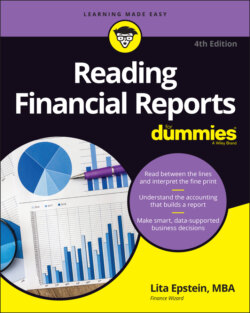Читать книгу Reading Financial Reports For Dummies - Lita Epstein - Страница 75
Double-entry accounting
ОглавлениеWhen you buy something, you do two things: You get something new (say, a chair) and you have to give up something to get it (most likely, cash or your credit line). Companies that use double-entry accounting show both sides of every transaction in their books, and those sides must be equal.
Probably at least 95 percent of businesses in the U.S. use double-entry accounting, whether they use the cash-basis or accrual accounting method. It's the only way a business can be certain that it has considered both sides of every transaction.
For example, if a company buys office supplies with cash, the value of the office supplies account increases, while the value of the cash account decreases. If the company purchases $100 in office supplies, here's how it records the transaction on its books:
| Account | Debit | Credit |
|---|---|---|
| Office supplies | $100 | |
| Cash | $100 |
In this case, the debit increases the value of the Office supplies account and decreases the value of the Cash account. Both accounts are asset accounts, which means both accounts represent things the company owns that are shown on the balance sheet. (The balance sheet is the financial statement that gives you a snapshot of the assets, liabilities, and shareholders’ equity as of a particular date. I cover balance sheets in greater detail in Chapter 6.)
The assets are balanced or offset by the liabilities (claims made against the company's assets by creditors, such as loans) and the equity (claims made against the company's assets, such as shares of stock held by shareholders). Double-entry accounting seeks to balance these assets and claims. In fact, the balance sheet of a company is developed using this formula:
Assets = Liabilities + Equities
